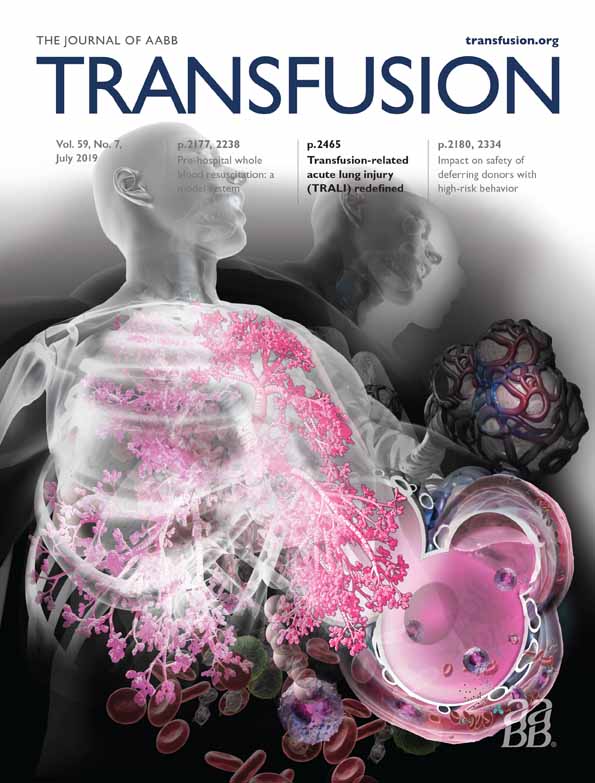The BEST criteria improve sensitivity for detecting positive cultures in residual blood components cultured in suspected septic transfusion reactions
Abstract
BACKGROUND
Culturing residual blood components after suspected septic transfusion reactions guides management of patients and cocomponents. Current practice, accuracy of provider vital sign assessment, and performance of the AABB culture criteria are unknown. A multicenter international study was undertaken to investigate these issues and develop improved culture criteria.
STUDY DESIGN AND METHODS
Retrospective data for all transfusion reactions resulting in residual blood component culture in 2016 were collected from participating hospitals. The performance of the AABB culture criteria were assessed for detection of positive culture results. Modifications to the AABB criteria including 1) recommending culturing in the setting of isolated high fevers, 2) defining hypotension and tachycardia using objective parameters, and 3) incorporating antipyretic use were tested to determine if modifications improved performance. Modifications associated with improvement were incorporate into the BEST criteria. The AABB and the BEST criteria were then tested against a data set enriched for positive culture results to determine which criteria were superior.
RESULTS
Data were collected from 20 centers encompassing 779,143 transfusions, 3,187 reported transfusion reactions, and 1,104 cultured components. There was marked variation in reaction reporting and culturing rates (0.0%-100.0%). Of 35 total positive component cultures, only one of 35 (2.9%) had concordant patient cultures; 12 of 34 (35.3%) did not have patient cultures performed. The BEST criteria had better sensitivity for detection of a positive culture result compared to the AABB criteria (74% vs. 41%), although specificity decreased (45% vs. 65%).
CONCLUSION
Compared to the AABB criteria, the BEST criteria have improved sensitivity for positive culture detection.
CONFLICT OF INTEREST
AWS—No conflicts to disclose. CSC—RedMedEd, University of Cincinnati; participant in Phase IV PIPER Study (Cerus Corp.); participant in LAS-213 Study (Octapharma). MD—RedMedEd, University of Cincinnati, Favros. MJF—participant in Phase IV PIPER Study (CERUS Corp.). IWM—no conflicts to disclose. NMD—member, medical advisory committee, Verax Biomedical.




